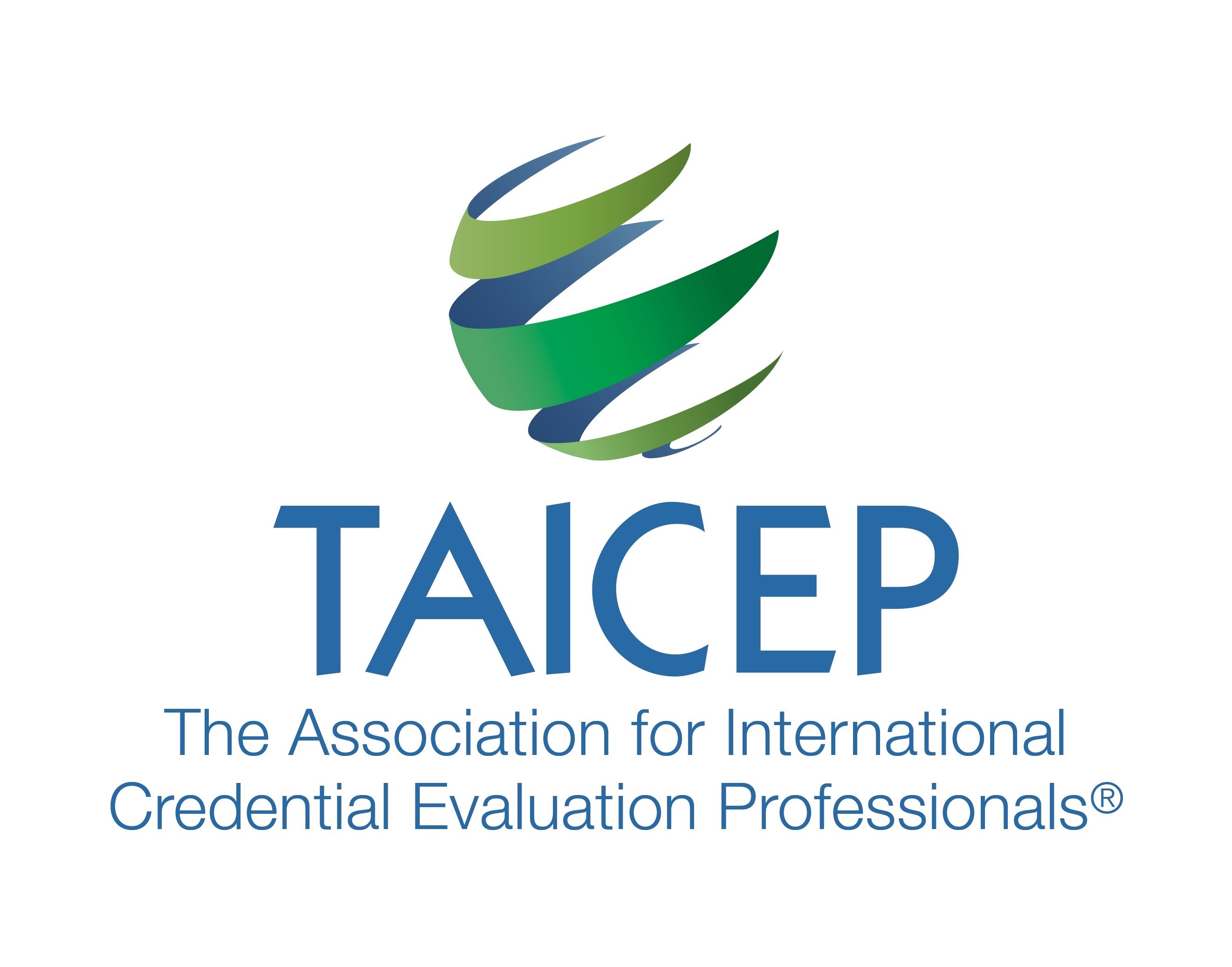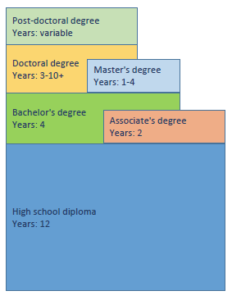A Brief Overview
Introduction
Education in the United States of America spans a variety of forms, as policy is dependent upon legislation by the federal government, states, local school districts, and regional accrediting bodies. The result of this complex interplay is a system rich with variety but lacking much sense of standardization.
It is important to note that while the federal government influences educational policy, it has an indirect role. The reason for this is historical and lies in the 10th amendment to the country’s constitution. While education is not specifically mentioned in the constitution, the 10th amendment grants states the autonomy to determine legislation for items not mentioned in the constitution. Thus, education rests largely under the purview of each of the 50 states.
While the federal Department of Education has limited oversight, it influences education through the authority to recognize non-governmental accrediting bodies, which in turn accredit individual schools within a multi-state geographical region. Each of the 50 states also creates its own regulations. To further complicate the system, states are divided into local school districts, which have authority over some aspects of education within that district.
It is important to note that while all 50 states are covered by at least one regional accrediting body that is recognized by the federal government, there are a number of other accrediting bodies that exist for a variety of reasons. Types of programs or institutions that these bodies might accredit may be professional, vocational, or religious.
This article will review the general US education ladder, its alternative forms, and take a deeper look at the system of accreditation and recognition for both primary/secondary and post-secondary/higher education institutions.
General Education Ladder
Primary and Secondary Education
Public education for primary and secondary school is free and available to all students. Private schools are also available, but almost all require that students pay tuition. Students in the US generally begin their schooling career at age 5 or 6 in kindergarten or 1st grade, although the compulsory age to start school varies across the states between the ages of 5-8. Kindergarten may or may not be required: 17 states and the District of Columbia require full- or part-time kindergarten, while 13 of these require full-time kindergarten. After kindergarten, students begin 1st grade and continue through 12th grade. After successful completion of 12th grade, students are awarded a high school graduation diploma and become eligible to pursue postsecondary education.
While completion of 12th grade is required for high school graduation, students are allowed to leave school before graduation (known as “dropping out”) once they reach a certain age (age 16-19), depending on the state. Texas is the only state to require students to attend school until age 19 if they have not yet graduated. Because the ages for compulsory schooling vary, the required number of years of compulsory education also varies, with a range of 9-13 years.
The Kindergarten-12th grade curriculum is typically separated into three parts: elementary/primary school, junior high/middle school, and high school. The grades included in each level vary by state and by school districts within each state. Excluding kindergarten since it is optional in some states, a few variations are shown in the table below, with the number of years listed in each column.
| College | System 1 | System 2 | System 3 | System 4 |
| Elementary School | 4 | 5 | 6 | 6 |
| Middle School | 4 | 3 | 2 | 6 combined (middle + high) |
| High School | 4 | 4 | 4 | – |
| Total | 12 years | 12 years | 12 years | 12 years |
Despite the variations, secondary school generally begins in grade 6-7 when teachers are assigned one subject taught to multiple groups of students. Before this level, most teachers instruct multiple subjects to the same group of students. To summarize, although compulsory education laws and the structure of primary, middle, and high schools may vary, all students must complete 12 grades (years) of primary and secondary education in order to graduate and become eligible to pursue post-secondary education.
Post-secondary Education
As with K-12 education, standards for post-secondary education vary across the country and from school to school. Noticeably different from K-12 education, however, is the tuition attached to higher education in the USA. While there are many publicly funded post-secondary institutions, students must pay to attend, and usually tuition is comparably expensive to institutions in other countries. Scholarships are available from multiple levels of government as well as private sources, but students must apply for these and not all are eligible to receive awards.
State governments pass legislation regulating higher education within their borders, and institutions must be approved to operate. Although these higher education institutions have much autonomy over internal governance, they must still meet certain state requirements.
Post-secondary education typically begins after high school graduation and offers the following typical credentials: associate’s degrees (2 years), bachelor’s degrees (4 years), master’s degrees (1-4 years), doctoral degrees (length of programs vary considerably, from 3-10 years or more), and post-doctoral degrees (length of time varies considerably). It is noticeable that undergraduate credentials tend to follow similar timelines, while graduate degrees vary greatly by field of study and institution.
Associate degree programs are two years in length and do not grant entry to a master’s degree program. However, credits from an associate’s degree will often transfer to a bachelor’s degree program. This allows students to enter into the second or third year of a bachelor’s degree program if they have already completed an associate’s degree. Vocational and technical degrees are also available, but generally grant entry into the workforce rather than to further academic study. Vocational and technical accreditation is largely programmatic rather than institutional.
Degrees that are professional in nature in other nations tend to be more academic in the US. This includes medicine (all types: dentistry, optometry, clinical psychiatry, etc.), teaching, law, and others. These types of programs are generally overseen by a programmatic accreditor as well as being offered in regionally accredited institutions. A license to practice is usually only granted if the degree was completed through an accredited program.
As a side note, “university” and “college” are frequently, although not always, interchangeable terms. “University” often refers to a large institution that offers degrees at the undergraduate, master’s, and doctoral levels. A “college” typically refers to a smaller institution that offers undergraduate degrees. “College” is also used as a colloquial term to refer to higher education in general (for example, students say they “go to college” even if their institution is officially titled a university).
Recognition & Accreditation
The complex process of recognition and accreditation in the US involves multiple independent entities including the federal Department of Education, state governments, and privately run agencies. In the US, the term “recognition” typically refers to federal approval of an accreditation body. The term “accreditation” typically refers to approval from a recognized accreditation body for an institution to operate at a specific level (institutional accreditation) or for a certain program to operate (programmatic accreditation). This article will focus mainly on institutional accreditation.
While there are no federal laws mandating that institutions attain accreditation, no federal funding is available to institutions that are not accredited. State funding for institutions is also often attached to accreditation. In addition to governmental approval, accreditation agencies for post-secondary institutions may also seek recognition from the Council for Higher Education Accreditation (CHEA). CHEA is the only non-governmental entity to recognize accreditors in the United States. In short, institutions in the United States are accredited by an agency that has been recognized by the federal Department of Education or CHEA. Institutions are not directly regulated by the federal government, but instead are accredited by these private agencies.
Department of Education
The Department of Education or similar office has existed in some form since 1867. However, from 1980 to present it has maintained cabinet status, meaning it is directly under the purview of the President of the United States. The Secretary of Education heads the department, and funding is approved by Congress. The stated mission of the Department of Education is, “to promote student achievement and preparation for global competitiveness by fostering educational excellence and ensuring equal access.” It does so by distributing financial aid based on established policies, collecting and disseminating data, and creating policy to ensure all students access to education.
As mentioned above, the Department of Education recognizes regional accrediting agencies, which accredit individual schools or programs. A branch within the Department of Education called the National Advisory Committee on Institutional Quality and Integrity (NACIQI) performs an extensive evaluation to help determine whether or not to award recognition to an accreditor. Once the evaluation is complete, the NACIQI makes a recommendation to the Secretary of Education. The Secretary then makes the final determination regarding recognition.
Council for Higher Education Accreditation (CHEA)
CHEA is the only non-governmental entity to recognize accreditors in the United States. Their leadership is self-described as a “board of college and university presidents, institutional representatives, and public members.” Membership is comprised of 3,000 degree-granting institutions. Their mission statement reads, “The Council for Higher Education Accreditation will serve students and their families, colleges and universities, sponsoring bodies, governments and employers by promoting academic quality through formal recognition of higher education accrediting bodies and will coordinate and work to advance self-regulation through accreditation.” While post-secondary institutions may obtain state and federally-recognized accreditation for funding purposes, accreditation from an agency recognized by CHEA confers a more stringent degree of academic integrity.
Regional Accrediting Bodies
Accreditors may be recognized by one of two bodies: the federal Department of Education or the privately run Council for Higher Education Accreditation (CHEA). Recognition from both are valued, although federal recognition is mainly to ensure funding. Recognition from CHEA focuses instead on academic curriculum and integrity of instruction. There are currently six regional accrediting agencies recognized by both the federal government and CHEA. Most have separate divisions to accredit primary/secondary and post-secondary institutions with all approved institutions listed on their website(s). These regional accreditors are listed below with the states and territories under their purview:
- Higher Learning Commission
- Arizona, Arkansas, Colorado, Illinois, Indiana, Iowa, Kansas, Michigan, Minnesota, Missouri, Nebraska, New Mexico, North Dakota, Ohio, Oklahoma, South Dakota, West Virginia, Wisconsin, Wyoming
- Middle States Commission on Higher Education
- Delaware, District of Columbia (Washington, D.C.), Maryland, New Jersey, New York, Pennsylvania, Puerto Rico, U.S. Virgin Islands
- New England Association of Schools and Colleges
- Connecticut, Maine, Massachusetts, New Hampshire, Rhode Island, Vermont
- Northwest Commission on Colleges and Universities
- Alaska, Idaho, Montana, Nevada, Oregon, Utah, and Washington
- Southern Association of Colleges and Schools
- Alabama, Florida, Georgia, Kentucky, Louisiana, Mississippi, North Carolina, South Carolina, Tennessee, Texas, and Virginia
- Western Association for Schools and Colleges
- California, Hawaii, Guam, American Samoa, Northern Mariana Islands, Palau, Federal States of Micronesia, Republic of Marshall Islands
It is important to note that while most esteemed institutions are accredited by a recognized agency, there are some institutions that are not accredited yet are still highly regarded and produce competitive graduates. Evaluators may want to assess unaccredited institutions on a case-by-case basis using resources such as curriculum guides and syllabi. Since accreditation is not a universal requirement in the US, certain institutions choose to abstain from the process while still offering quality programs. Others will skip accreditation in order to offer lower-quality programs.
Conclusion
Education in the US presents itself in a variety of forms; the result of a nation comprised of 50 states, each with the autonomy to create their own policies, legislation, and expectations. Even though there is no central body with the oversight and authority to fully regulate the education system in the US, the entities in place succeed in working together—whether it be collaboratively or not—to uphold standards and ensure access to quality of education for students.
Resources
Council for Higher Education Accreditation, CHEA at a Glance: https://www.chea.org/about
Education Commission of the States, 50-State Comparison: http://ecs.force.com/mbdata/mbquest4ci?rep=IT18A
Education Commission of the States, 50 State Review: https://www.ecs.org/wp-content/uploads/Age_Requirements_for_Free_and_Compulsory_Education-1.pdf
U.S. Department of Education, About ED: https://www2.ed.gov/about/landing.jhtml
WES World Education and News, Education in the United States of America: https://wenr.wes.org/2018/06/education-in-the-united-states-of-america
Images
US Education ladder: Emily Tally, 2019
Schoolbus: https://www.everypixel.com/image-18084403143514919078
Empty lecture hall: https://www.kasu.org/post/study-ranks-asu-mountain-home-best-community-college-nation-arkansas-ranks-4th#stream/0
Emily Tally
Credentials Analyst, Sr.
Indiana University
In this edition:
Annual Conference – March 2019 Newsletter
Member Spotlight -March 2019 Newsletter
Building a Resource Library V -March 2019 Newsletter
Establishing Policy for Your Office -March 2019 Newsletter
Education in the US -March 2019 Newsletter
Remote Work for Evaluators -March 2019 Newsletter




